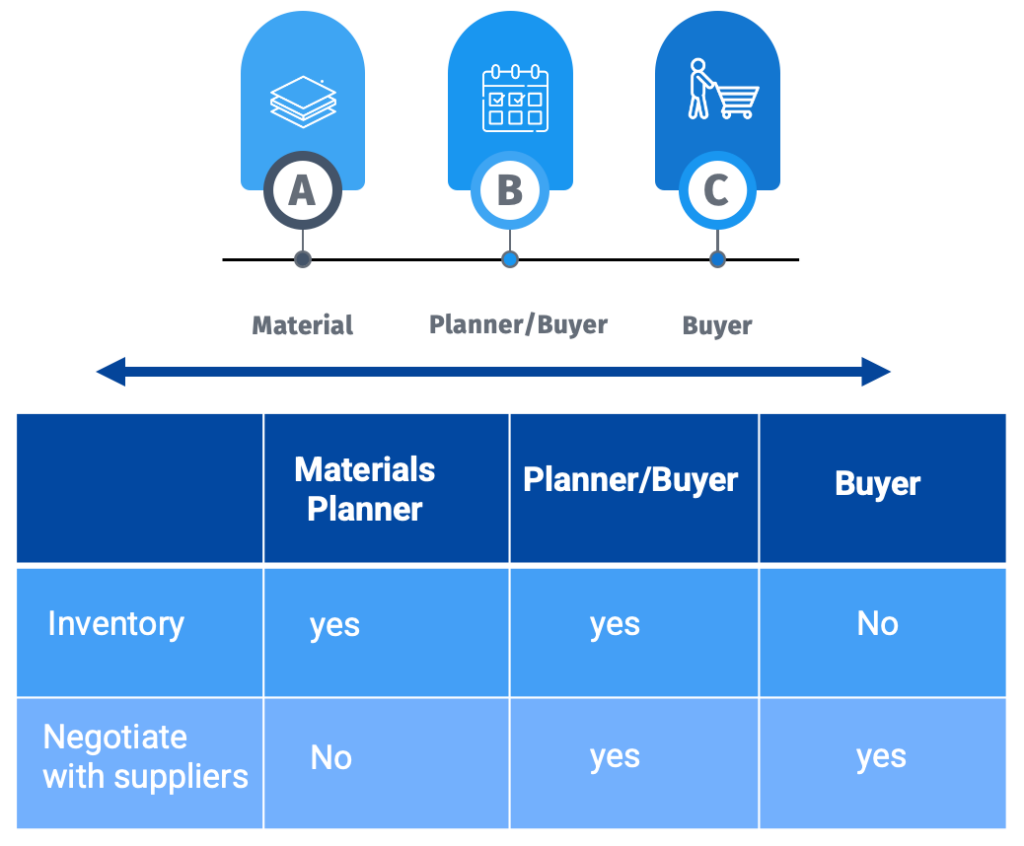In the current purchasing landscape, the tasks of strategic or tactical purchasing, planning, inventory management, and supplier supervision are frequently divided among distinct positions. However, occasionally the duties of the buyer and planner are merged into a singular role performed by an individual.
Let’s explore a couple of scenarios to help illustrate how these roles are used.
Scenario 1: Tactical Buying
Remember that tactical buying is focused on transactions and non-strategic materials, with no consideration given to optimizing inventory. Therefore, it falls to the material planner to manage inventory levels and communicate with the buyer to place orders with the supplier. The buyer’s role in this scenario involves tactical tasks such as order placement, expediting, and follow-up.
Material Planner – The person normally responsible for managing the inventory levels, schedules and availability of selected items either manufactured or purchased.
Scenario 2: Strategic Procurement
In strategic procurement, there are different roles for the buyer. The buyer handles procurement planning, purchasing and inventory control, and takes a more strategic approach by performing activities such as strategic sourcing, negotiating long-term agreements, and conducting value analysis. On the other hand, the planner/buyer, who is also the supplier scheduler, is responsible for completing the tactical order placement. As per the definition, the planner/buyer is responsible for inventory planning and scheduling orders with suppliers using an approved vendor list.
Supplier Scheduler – A person whose main job is working with suppliers regarding what is needed and when. Are in direct contact with both MRP and the suppliers. Perform the material planning for items under their control, communicate the resultant schedules to their suppliers, do follow-up, resolve problems and advise other planners and the master scheduler when purchased items will not arrive on time to support the schedule.
Approved Vendor List – A list of parties that have been approved by a company as its suppliers. This list usually is based on product quality and the financial stability of the vendor.
Buyers and planners can have one or more buyer codes assigned to them based on the commodity or supplier. These codes help with problem-solving, integrating suppliers into the business, managing administrative tasks, forecasting and planning inventories, and reporting on any issues that arise.
Buyer Code – A code used to identify the purchasing person responsible for a given item or purchase order.


